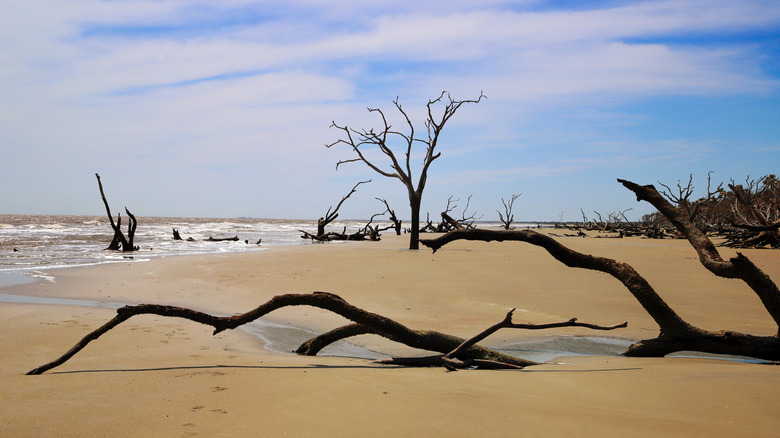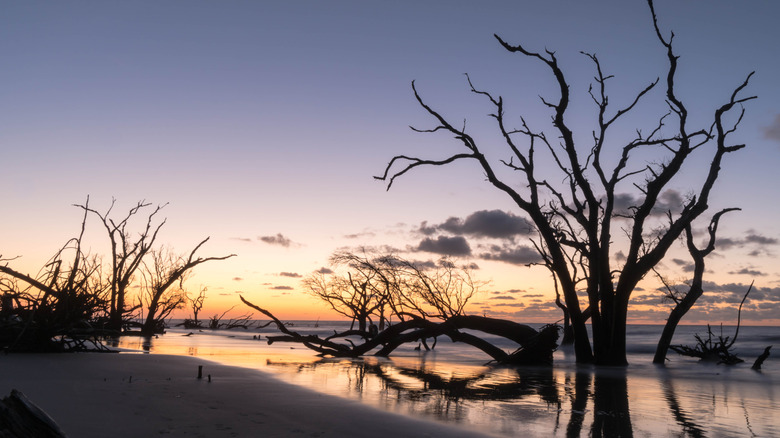Between Charleston And Georgetown Is South Carolina's Wild Coastal Escape With Untouched Beaches Full Of Driftwood
While one of America's top summer destinations in 2025 may be Myrtle Beach, travelers would be remiss to skip over South Carolina's Bulls Island. About a 40-minute drive north of Charleston, this remote barrier island is part of the Cape Romain National Wildlife Refuge (operated by the U.S. Fish and Wildlife Services) and offers a raw, untouched beauty that's increasingly rare along the East Coast.
It's not like any other South Carolina island that offers shops, restaurants, and a slice of history. Instead, Bulls Island is a wild coast with shorelines, like Boneyard Beach, where skeletons of weathered trees stand in the surf like natural sculptures. The beach is accessible only by ferry run by Coastal Expeditions, and once you arrive, you're met with an otherworldly landscape of driftwood-strewn sands, quiet trails through maritime forest, and the kind of stillness that makes it feel like your own private wilderness. Here, the absence of crowds gives way to the presence of wildlife, such as alligators, ospreys, and even the occasional bobcat, coexisting in peace. It's a day trip that feels like a step back in time, and a true coastal escape between the bustling hubs of Charleston and Georgetown.
Things to do on Bulls Island
Bulls Island is a nature lover's playground, with 5,000 acres of maritime forest. Begin with the Coastal Expeditions ferry from Garris Landing, a scenic 30‑minute ride through tidal creeks where dolphins, sea turtles, and 293 bird species may greet you on your journey. Once ashore, the island reveals over 16 miles of trails, including the half‑mile Middens Trail and the two‑mile Turkey Walk Trail, plus unpaved service roads winding through maritime forest and past freshwater ponds.
Of course, you can head to Boneyard Beach for incredible coastal views from dusk until dawn, but if you're interested in a more immersive activity, you can do a Paddle and Hike tour, combining a kayak trip through serene marshes with hiking to the beach. Also, you can partake in the dramatic Sunrise Expedition at Boneyard Beach, where the tour is timed perfectly to catch the picturesque rising sun.
Pack water, snacks, sun protection, and whatever else you may need, as there are no facilities on the island, only a restroom near the ferry dock. With no crowds and no development, Bulls Island offers pure Lowcountry wilderness with unforgettable experiences. Want to learn more about South Carolina's coastal islands? Check out our feature on Fripp Island, a quiet escape with nature walks and beach fun.

